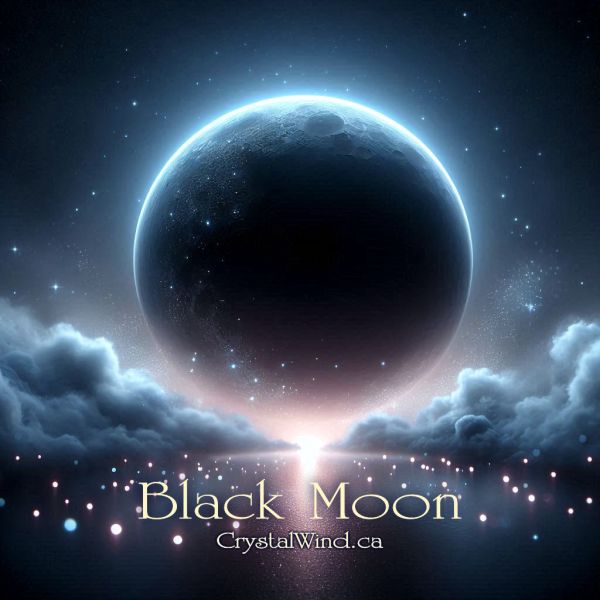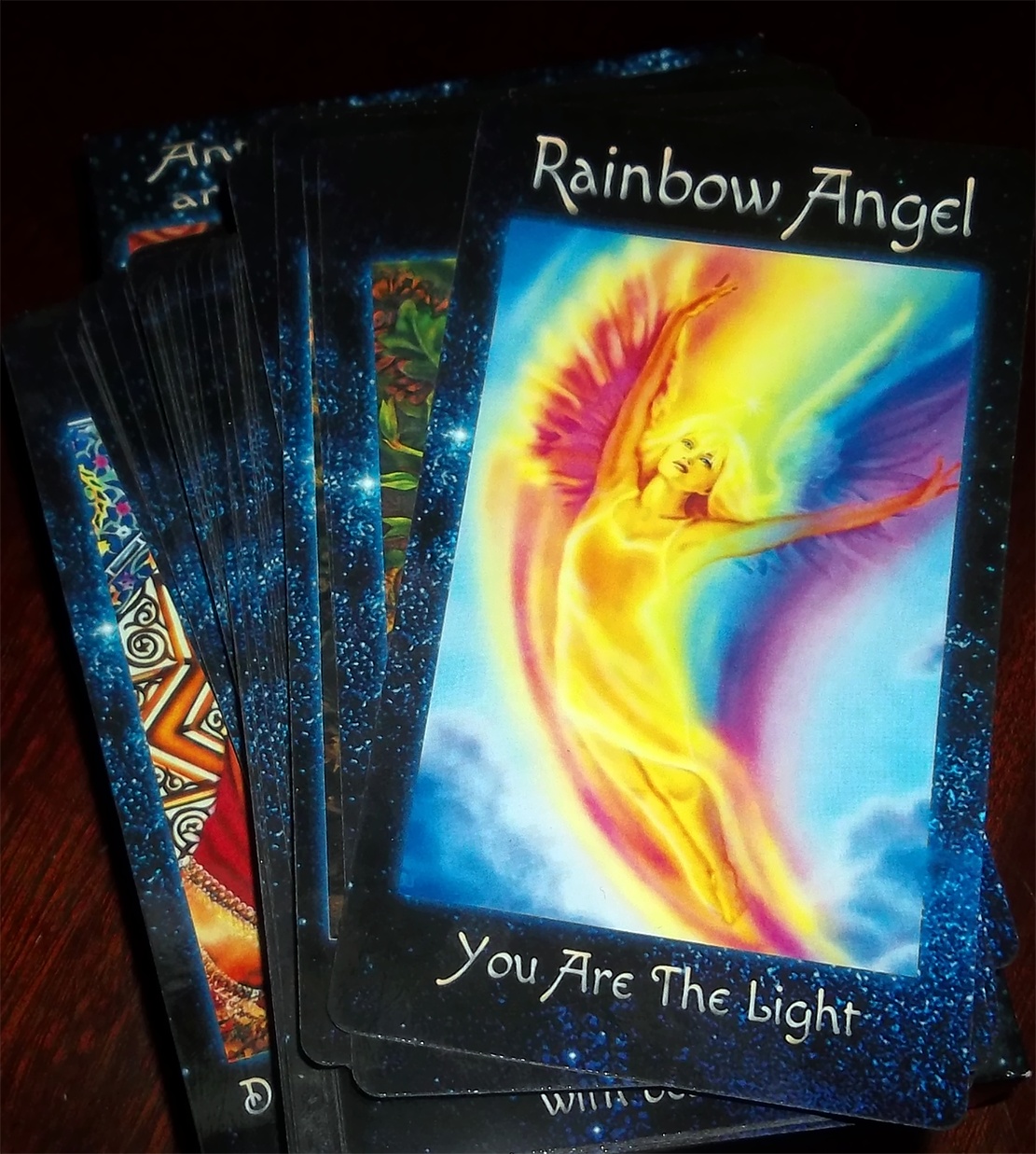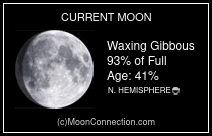The Hidden Night: Unveiling the Mysteries of the Black Moon
- Details
- Written by And-El
- Views: 2452

Understanding Black Moon Phenomena
Second New Moon in a Calendar Month
The concept of a "Black Moon" is intriguing and often compared to the "Blue Moon." While a Blue Moon refers to an additional full moon in a month, a Black Moon signifies an extra new moon. This occurrence is tied to the lunar cycle, which lasts approximately 29.5 days. Consequently, having two new moons in a single calendar month is a rare event. This rarity arises from the fact that calendar months do not perfectly align with the lunar cycle. Occasionally, a new moon will appear at the very beginning of a month, allowing another to occur before the month concludes.
This phenomenon takes place roughly once every 32 months. Astronomers can predict these events by examining the synodic month, which is the duration it takes for the moon to return to the same phase in relation to the Sun, as observed from Earth. This alignment and the resulting Black Moon offer a unique opportunity to observe celestial mechanics at play. For a detailed exploration, you can refer to Time and Date - Black Moon.
Third New Moon in a Season with Four
Seasons, as defined by solstices and equinoxes, traditionally contain three new moons. However, the Earth's elliptical orbit around the Sun can extend a season slightly, allowing for four new moons. When this happens, the third new moon in such an extended season is also called a Black Moon. This occurrence underscores the dynamic nature of our planet's movement through space.
The length of each astronomical season can vary due to the elliptical shape of Earth's orbit. When the Earth is closer to the Sun, at perihelion, the season shortens slightly. Conversely, at aphelion, the season extends, accommodating an additional lunar cycle. These variations in seasonal length demonstrate the intricate dance between Earth and its celestial counterparts. To learn more, visit Space.com - Black Moon.
Absence of a New Moon in February
February's brevity, with its 28 or 29 days, sometimes results in the absence of a new moon. This absence leads to a concentration of new moons in the months adjacent to February, setting up the scenario for a Black Moon. This cycle belongs to what is known as the Metonic cycle, a 19-year period over which the lunar and solar calendars align closely.
Named after Meton of Athens, the Metonic cycle illustrates how 19 solar years correspond to roughly 235 lunar months. This alignment results in the recurrence of lunar phenomena such as the absence of a new moon in February. This cycle serves as a testament to humanity's long-standing interest in tracking celestial events. For additional insights, consult NASA - Lunar Phases.
Historical and Cultural Context
Lunar cycles have been a subject of fascination throughout history, observed and documented by ancient civilizations such as the Sumerians and the Maya. Each culture developed its calendar systems to track these cycles. Although the term "Black Moon" might not have been historically prevalent, the implications of lunar phases were significant.
In agricultural societies, the lunar calendar was vital for determining the best times for planting, harvesting, and conducting religious ceremonies. In Mesopotamia, for example, the new moon signaled the start of new agricultural cycles. In China, the lunar calendar influenced the timing of festivals like the Chinese New Year. These historical observations highlight the moon's crucial role in human civilization. For more historical context, visit Ancient History Encyclopedia - Ancient Calendars.
Cultural Significance
In contemporary times, the Black Moon has gained importance in spiritual and astrological practices. Its rarity imbues it with special significance. Various spiritual communities view the Black Moon as an opportune time for rituals, particularly those involving intention setting, healing, or transformation. The Black Moon's energy is thought to amplify these practices, providing a powerful moment for personal growth.
Astrologers interpret the Black Moon as a potent moment for personal rebirth or the initiation of new life chapters. This period emphasizes the need for introspection or meditation, offering individuals an opportunity to align their intentions with the lunar energy. More on these cultural aspects can be found at Astrostyle - Moon Phases.
Significance in Modern Times
Astrologically, every new moon represents an opportunity to start anew, but a Black Moon carries intensified energy for transformation due to its scarcity. It is often seen as a cosmic reset, providing a rare chance to realign one's life path or initiate significant personal changes. The Black Moon's energy is believed to enhance manifestation efforts, making it a favorable time for setting intentions or manifesting desires.
Beyond astrology, many spiritual practitioners incorporate the Black Moon into their practices. It is a time highlighted for deep meditation, reflection on past cycles, and envisioning future ones. Individuals or groups might hold rituals to harness the Black Moon's energy for healing or new beginnings. Some communities come together for shared practices, emphasizing healing or collective intention setting.
Black Moon in 2025: A Closer Look
The Black Moon occurring on August 30, 2025, offers an opportunity for those attuned to lunar energies to engage in unique spiritual or personal development activities. This event may inspire festivals or gatherings that celebrate the lunar cycle, potentially sparking interest in lunar astronomy or astrology among the public.
Individuals might use this occasion to start journals, plan life changes, or engage in ceremonies aligned with their spiritual beliefs. With the internet connecting people worldwide, the Black Moon could lead to a surge in online discussions, webinars, or live streams focusing on its interpretation across different cultures and spiritual paths. For further information, refer to Astro Calendar 2025.
Embracing the Black Moon
While the Black Moon may not be as universally recognized as the Full or New Moons, it offers a profound connection to celestial rhythms. It serves as a reminder of our ancient ties to the stars and the moon, encouraging us to pause, reflect, and perhaps realign our lives with nature's broader cycles. Whether viewed through science, spirituality, or culture, the Black Moon challenges and invites us to explore our place in the cosmos, offering opportunities for growth and introspection.
For more insights into the mystical and spiritual aspects of the Black Moon, you can explore CrystalWind.ca.
This article is written by And-El of CrystalWind.ca © 2025 crystalwind.ca. You may share this article as long as you provide proper credit to the author, include a link to the original article, and do not alter the content. Commercial use is prohibited without permission.

Liked this article? Dive deeper into personal growth and wellness! Check out CrystalWind.ca for spiritual wisdom or explore AromaWorx.ca for natural well-being tips. Spread the positivity—share this with friends on their happiness journey!
Let’s Chat! Drop Your Thoughts Below! ![]()
Dive into the Mystical World of the Crystal Wind Oracle Deck!
Get All the Enchanting Details Now!
NEW Expanded Boxed Edition!
Now with 58 Cards for Richer Wisdom!
Imagine a world of inspiration and healing, free for all—made possible by YOU!
Donate Now—Ignite the Magic at CrystalWind.ca!

Epilepsy - Finding A Cure
Your donation can make a difference!
Help us find a cure – donate now!
Unlock Your Light: Join Lightworkers Worldwide on CrystalWind.ca!
Follow Us!
Moon Phases
Featured This Month
Crystals for Virgo
As the warmth of summer begins to soften into the crispness of autumn, the Sun... Read more
Virgo Mythology
The Virgo Myth In all of constellation mythology, few legends are as misund... Read more
Mabon Magic: Ideas For Fall Decoration And R…
Welcome (almost!) to Fall! We’re turning the Great Wheel once again, toward ... Read more
The Vine: September 2nd - September 29th
The Autumnal Equinox ( Alban Elfed ) Celtic Symbol : The White Swan Read more
Sweet Violet
Sweet Violet Faithfulness and modesty. “I will always be true to you.” Helps... Read more
Watermelon Tourmaline
Synonym: Rainbow Tourmaline The watermelon tourmaline is a rare variety t... Read more
Sun in Virgo
An Overview of Sun Sign Characteristics for Virgo Virgo is guided by Mercur... Read more
Mabon in Modern Times: Fresh Takes on the Au…
The Mabon season begins somewhere around the 21st-22nd of September and cont... Read more
Peridot: The Healer's Stone
Peridot has been used as a Power Stone for centuries. Peridot fosters emotio... Read more





























